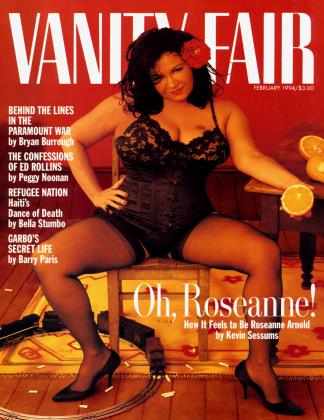Sign In to Your Account
Subscribers have complete access to the archive.
Sign In Not a Subscriber?Join NowSuper Egon
SPOTLIGHT
you wouldn't think Amer ica had much more to learn about sex, decay, and narcissism. In fact, thouah. one vital quality is still missing—the sort of high style that Egon Schiele (1 890—1918) brought to such matters in the morbid, sexually haunted Vienna of his youth. Schiele's erotically wired line is one of the most beautiful in 20th-century art, not least because it does not overlook the soul reflected in Narcissus's pool. This month, an exhibition of about 70 of Schiele's pictures, organized by Art Services International, opens at the National Gallery of Art in Washington, D.C. It should excite those weary of Bobbitts and Buttafuocos.
Although he died while still young—of influenza at the age of 28—Schiele fully absorbed the lush and often exquisitely poisonous atmosphere of Vienna before the First World War. The dreamily erotic painting of Gustav Klimt inspired him, as did the Expressionist distortions of Oskar Kokoschka. His neurotic nature appeared designed for analysis by his fellow Viennese Sigmund Freud. More than anything else, however, his art captured the feverish self-absorption of a certain kind of young man. In the 1912 Self-Portrait, Bust (watercolor and pencil on paper, 13¾ in. by 10 in.), his witchy eyes are ruled equally by desire and disgust, and his hair seems to have a life of its own—springing from a head that cannot contain its dreams.
MARK STEVENS
 View Full Issue
View Full Issue


















Subscribers have complete access to the archive.
Sign In Not a Subscriber?Join Now